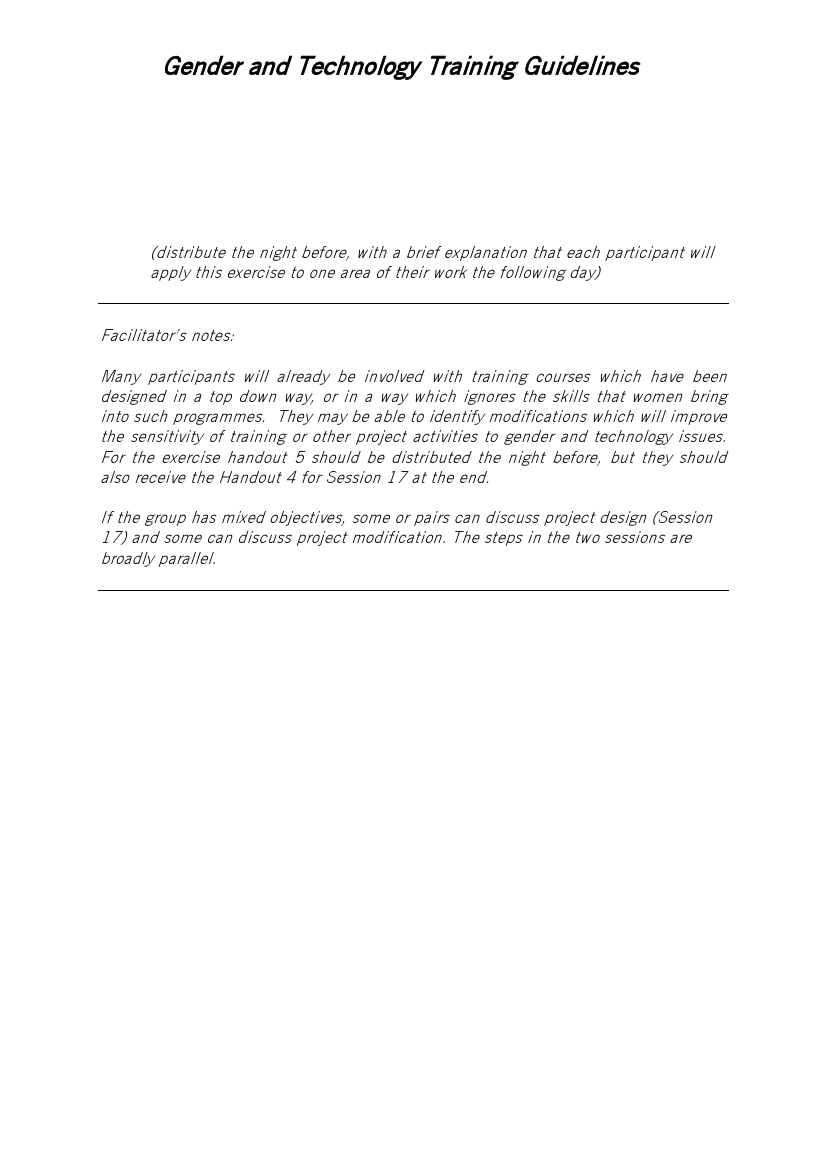
Gender and Technology Training Guidelines
CHANGING EXISTING PROJECTS, TRAINING COURSES OR SIMILAR ACTIVITIES
PURPOSE To enable participants to include the perspectives they have learned in their
ongoing everyday work
TIME
3 hours
MATERIALS Handout 5 of 'key points to consider' taken from 'Steps in Gender Analysis'
(distribute the night before, with a brief explanation that each participant will
apply this exercise to one area of their work the following day)
Facilitator’s notes:
Many participants will already be involved with training courses which have been
designed in a top down way, or in a way which ignores the skills that women bring
into such programmes. They may be able to identify modifications which will improve
the sensitivity of training or other project activities to gender and technology issues.
For the exercise handout 5 should be distributed the night before, but they should
also receive the Handout 4 for Session 17 at the end.
If the group has mixed objectives, some or pairs can discuss project design (Session
17) and some can discuss project modification. The steps in the two sessions are
broadly parallel.
ACTIVITY
Step 1
Step 2
Step 3
Introduce the session and ask participants to describe briefly to the main
group, one activity in which they are involved or with which they are familiar
Divide participants into pairs and ask each couple to run through the 'key
points to consider' in relation to the activity that they have chosen. Then
together identify which aspects of the work could be modified to include issues
considered during the training. Approximately one hour should be spent on
each partner’s activity.
In the main group, each person's partner should briefly describe where they
agreed changes could be made to the activities identified in Step One.
STEP 4
Discussion:
How did you feel about going through the process?
What kinds of changes are possible?
How will colleagues adapt to the changes?
36